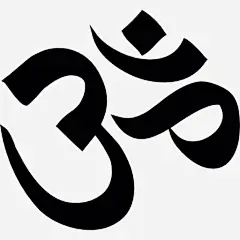Om stands as perhaps the most universally recognized sacred sound in human spiritual tradition, transcending cultural boundaries to become a fundamental element in meditation, sound healing, and consciousness exploration practices worldwide. This ancient Sanskrit syllable, written as ॐ and pronounced as AUM, represents far more than a simple sound or word—it embodies the primordial vibration from which all existence emerges, the cosmic sound that underlies and permeates the entire universe according to ancient Vedantic philosophy.
The profound significance of Om extends beyond its religious origins to encompass scientific understanding of sound, consciousness, and healing that validates ancient wisdom through contemporary research and practical application. Modern practitioners across diverse cultural backgrounds have discovered the transformative power of this sacred syllable, finding in its simple yet profound vibration a gateway to deeper states of awareness, enhanced wellbeing, and spiritual development.
Understanding Om requires exploration of multiple dimensions including its historical and cultural foundations, symbolic representations, philosophical meanings, and practical applications that demonstrate how this ancient sound continues to serve contemporary needs for healing, growth, and spiritual connection. The universality of Om’s appeal reflects fundamental human responses to specific vibrational frequencies and patterns that resonate with natural biological and psychological processes.
This comprehensive exploration reveals how Om functions as both a practical tool for personal development and a profound symbol of ultimate reality, bridging ancient wisdom traditions with modern understanding of consciousness, sound healing, and human potential development through the transformative power of sacred vibration.

Historical Origins and Cultural Context
Om in Ancient Indian Literature
The earliest recorded mentions of Om appear in the Rig Veda, the oldest of the Hindu scriptures dating back over 3,500 years, where it emerges as the primordial sound that preceded and enabled the creation of the universe. These ancient texts describe Om as the sound-form of Brahman, the ultimate reality that underlies all existence, establishing the fundamental theological and philosophical framework that continues to influence spiritual understanding today.
The Upanishads, philosophical texts that form the theoretical foundation of Hindu thought, provide extensive exploration of Om’s significance through detailed analysis of its three-part structure (A-U-M) and its relationship to consciousness, reality, and spiritual liberation. The Mandukya Upanishad dedicates itself entirely to Om, presenting systematic teaching about how this sacred syllable represents the entirety of existence across all states of consciousness and time.
In the Bhagavad Gita, Krishna declares Om to be the imperishable Brahman and instructs that meditation on this sacred sound leads to the highest spiritual realization. This text establishes Om as both a means of spiritual practice and a representation of the divine presence that guides practitioners toward enlightenment through focused contemplation and repetition.
The linguistic analysis of Om in Sanskrit literature reveals sophisticated understanding of sound symbolism and vibrational philosophy that influenced subsequent developments in yoga, meditation, and spiritual practice. Sanskrit grammarians and philosophers developed elaborate theories about the relationship between sound, meaning, and reality that positioned Om as the fundamental vibration from which all language and creation emerge.
Traditional commentaries and philosophical treatises have interpreted Om through various schools of Hindu thought, creating rich theological and metaphysical frameworks that explore its significance for understanding consciousness, reality, and spiritual development. These interpretations demonstrate the depth and complexity of Om’s meaning within Hindu cultural and philosophical traditions.
Om in Buddhist Traditions
Early Buddhist traditions adopted Om while adapting its meaning to align with Buddhist philosophical principles, particularly the concepts of impermanence, suffering, and liberation that characterize Buddhist understanding of existence and spiritual development. Buddhist texts and practices incorporate Om as a sacred sound that supports meditation and consciousness transformation while maintaining distinctively Buddhist interpretations.
The development of Mahayana Buddhism saw expanded use of Om in mantras and ritualistic practices, most notably in the famous six-syllable mantra “Om Mani Padme Hum” associated with Avalokiteshvara, the bodhisattva of compassion. This mantra demonstrates how Om functions as an opening invocation that prepares consciousness for deeper spiritual work and compassionate action.
Tibetan Buddhist traditions developed sophisticated understanding of Om’s role in tantric practices, meditation techniques, and consciousness transformation methods that utilize specific vibrational patterns and contemplative approaches. These traditions preserve detailed instructions for Om practice that integrate sound work with visualization, breathwork, and philosophical study.
Different Buddhist schools across Asia have maintained varying approaches to Om practice while preserving its essential function as a sacred sound that supports spiritual development and consciousness expansion. These cultural variations demonstrate Om’s adaptability to different philosophical frameworks while maintaining its fundamental vibrational and spiritual properties.
Contemporary Buddhist teachers and practitioners continue to explore Om’s significance for modern spiritual development while maintaining connection to traditional understanding and practice methods that have been transmitted through centuries of contemplative tradition and spiritual experimentation.
Similar Concepts in Other Cultural Traditions
Christian mystical traditions recognize parallels between Om and the concept of the Word (Logos) in Christian theology, particularly as described in the Gospel of John where “In the beginning was the Word, and the Word was with God, and the Word was God.” This theological parallel suggests universal human recognition of sacred sound’s fundamental role in creation and spiritual understanding.
Islamic Sufism employs dhikr practices that involve repetitive invocation of divine names and sacred phrases, creating vibrational and meditative experiences similar to Om practice. These traditions recognize the transformative power of sacred sound while maintaining distinctively Islamic theological and practical frameworks that serve spiritual purification and divine connection.
Ancient Egyptian traditions incorporated sacred sounds and vibrational practices in temple ceremonies and spiritual initiation rites, suggesting widespread ancient understanding of sound’s power for consciousness transformation and spiritual development. Archaeological evidence indicates sophisticated use of acoustic properties in sacred architecture and ceremonial practices.
Greek philosophical traditions, particularly Pythagorean teachings about the music of the spheres, recognized mathematical and vibrational principles underlying cosmic harmony and human consciousness. These concepts parallel Vedantic understanding of Om as the fundamental vibration that creates and sustains universal order and individual awareness.
Indigenous spiritual traditions worldwide have maintained sacred sound practices that parallel Om’s functions for community building, healing, spiritual connection, and consciousness alteration, suggesting universal human recognition of specific vibrational patterns’ power for transformation and transcendence.
Symbolism and Symbolic Meaning

Visual Representation of the Om Symbol
The Sanskrit character ॐ (Om) represents one of the most recognizable spiritual symbols in human culture, with its distinctive curves and sacred geometry encoding profound philosophical and spiritual meanings that connect visual representation to vibrational and metaphysical concepts. The symbol’s design reflects ancient understanding of how visual forms can convey spiritual truths and support contemplative practice.
The upper curve of the Om symbol represents the waking state of consciousness, where individual awareness engages with the external world through sensory perception and rational thinking. This curve embodies the active, engaged aspect of human consciousness that deals with daily life, practical concerns, and external relationships while maintaining connection to deeper spiritual dimensions.
The larger lower curve symbolizes the dream state of consciousness, representing the subconscious mind’s activity during sleep and the realm of imagination, memory, and psychological processing that occurs beyond ordinary waking awareness. This element of the symbol acknowledges the importance of unconscious processes in spiritual development and psychological integration.
The curve extending from the middle represents deep sleep consciousness, the state of complete rest where individual awareness temporarily dissolves into undifferentiated consciousness. This represents the peaceful, regenerative aspect of existence where ego boundaries disappear and consciousness returns to its source in pure awareness.
The crescent shape at the top symbolizes Maya, the veil of illusion that separates individual consciousness from recognition of ultimate reality. This element represents the challenges and obstacles that spiritual practitioners must transcend to achieve authentic spiritual realization and liberation from limiting beliefs and perceptions.
The dot (bindu) above the crescent represents Turiya, the fourth state of consciousness that transcends waking, dreaming, and deep sleep to embody pure awareness itself. This dot symbolizes the goal of spiritual practice—the realization of consciousness beyond all states and conditions, representing enlightened awareness and spiritual liberation.
Triple Structure and Deep Meaning
The three-part structure of AUM reflects fundamental patterns that appear throughout existence, from the basic structure of time (past, present, future) to the essential aspects of human experience (thinking, feeling, willing) and the cosmic principles that govern creation, preservation, and dissolution. This triadic pattern demonstrates Om’s comprehensive representation of existence in all its dimensions.
The A sound originates from the back of the throat and represents the beginning, creation, and the gross physical world that can be perceived through the senses. This sound symbolizes birth, manifestation, and the creative force that brings potential into actual existence. It corresponds to the waking state where consciousness engages actively with external reality.
The U sound forms in the middle of the mouth and represents preservation, maintenance, and the subtle realm of mind, emotion, and energy that underlies physical manifestation. This sound symbolizes the sustaining power that maintains existence and corresponds to the dream state where consciousness operates through imagination and psychological processes.
The M sound closes the lips and represents dissolution, transformation, and the causal realm of pure potentiality from which all manifestation emerges and to which it returns. This sound symbolizes the destructive aspect of divinity that clears away the old to make space for new creation, corresponding to deep sleep where individual consciousness merges with universal awareness.
The silence that follows the audible AUM represents the eternal, unchanging consciousness that underlies and pervades all states of existence. This silence embodies the source and goal of spiritual practice—the recognition of pure awareness that remains constant through all changes in experience and understanding.
The integration of sound and silence in Om practice teaches practitioners to recognize both the dynamic and static aspects of existence, developing appreciation for change and impermanence while cultivating connection to the unchanging awareness that observes all experience without being affected by it.
Cosmological and Philosophical Implications
Om represents the cosmic sound (Nada Brahma) that creates and sustains the universe, reflecting ancient understanding of reality as fundamentally vibrational in nature. This concept parallels modern scientific understanding of matter and energy as different manifestations of vibrational patterns, suggesting profound insight into the nature of existence that transcends cultural and temporal boundaries.
The philosophical concept of Om as Shabda Brahman (sound-Brahman) positions sound and vibration as the fundamental creative principle that manifests the apparent multiplicity of existence from the unity of pure consciousness. This understanding influences spiritual practice by emphasizing the transformative power of sound and the importance of vibrational harmony for spiritual development.
The relationship between Om and consciousness states provides a practical framework for understanding and exploring different levels of awareness through sound practice. This connection between vibrational practice and consciousness development offers systematic approach to spiritual development that can be adapted to various cultural contexts and individual needs.
Om’s representation of non-dual consciousness (Advaita) teaches that apparent separation between individual and universal awareness results from limited perception rather than actual division. This philosophical understanding supports spiritual practices that use Om to transcend ego boundaries and realize the fundamental unity underlying apparent diversity.
The temporal aspect of Om practice connects practitioners to the eternal present moment that exists beyond past and future, offering practical method for developing present-moment awareness and liberation from time-bound thinking patterns that create suffering and limitation.
Om in Meditation and Spiritual Practice
Meditation Entry Tool
Om serves as an ideal focal point for beginning meditators because its simple structure and natural resonance provide accessible entry into concentrated awareness while offering sufficient depth for advanced practice development. The sound’s inherent vibrational qualities naturally draw attention inward while creating pleasant acoustic experience that supports sustained practice.
Sound-based meditation using Om helps practitioners develop single-pointed concentration (dharana) by providing clear object of attention that engages multiple senses simultaneously. The physical sensation of vocal vibration, auditory experience of sound, and mental focus on meaning create comprehensive meditative experience that supports steady attention development and mental stabilization.
The progressive nature of AUM pronunciation teaches practitioners to sustain attention through sequential phases while maintaining awareness of the complete process. This temporal structure develops capacity for extended concentration while providing natural rhythm that supports longer meditation sessions and deeper states of absorption.
Om practice naturally leads to awareness of inner sound (nada) and subtle vibrational experiences that characterize advanced meditative states. Regular practitioners often report perceiving inner sounds and vibrational sensations that continue beyond formal practice periods, indicating development of refined perception and consciousness sensitivity.
The universality of Om enables practitioners from diverse backgrounds to share meditation experiences and participate in group practices that create collective resonance and mutual support for spiritual development. This accessibility makes Om particularly valuable for building meditation communities and supporting sustained practice commitment.
Spiritual Development Enhancement
Regular Om practice facilitates progressive development through traditional spiritual stages by providing consistent method for cultivating concentration, mindfulness, and wisdom that support advancement toward liberation and enlightenment. The practice adapts naturally to different developmental levels while maintaining connection to ultimate spiritual goals.
Om chanting develops devotional qualities (bhakti) by engaging practitioners in worship and surrender to the divine presence represented by the sacred sound. This devotional aspect cultivates humility, love, and surrender that balance intellectual understanding with heart-centered spiritual development and emotional maturation.
The integrative nature of Om practice supports development of witness consciousness that observes mental activity without identification or reactivity. This capacity for non-attached awareness represents crucial spiritual development that enables freedom from emotional turbulence and mental conditioning that limits authentic self-expression.
Om practice facilitates recognition of consciousness as the fundamental reality underlying all experience, supporting realization of the Self (Atman) that represents the goal of Vedantic spiritual development. This recognition transforms practitioner understanding of identity and purpose while providing foundation for enlightened living and service.
Advanced Om practice may spontaneously generate mystical experiences including unity consciousness, cosmic awareness, and direct perception of divine presence that accelerate spiritual development while requiring integration and grounding to support balanced spiritual growth.
Energy Work Applications
Om practice activates and balances the chakra system by providing vibrational stimulation that resonates with each energy center’s natural frequency while promoting overall energetic harmony and flow. Different aspects of AUM pronunciation specifically target different chakras while the complete sound integrates the entire energetic system.
The deep vibrations of properly pronounced Om clear energetic blockages and stagnation that may accumulate through stress, trauma, or limited consciousness, restoring natural energy flow and vitality. Regular practice develops sensitivity to subtle energy movement while providing practical tools for maintaining energetic health and balance.
Om chanting generates protective energy fields that shield practitioners from negative influences while attracting positive energy and spiritual guidance. This protective aspect makes Om particularly valuable for sensitive individuals and those working in challenging environments that may drain energy or create spiritual vulnerability.
Group Om practice creates collective energy fields that amplify individual benefits while building community connections and mutual support for spiritual development. These group experiences often generate powerful healing energy and spiritual inspiration that motivate continued practice and service to others.
The relationship between Om and pranayama (breath work) enhances energy cultivation by coordinating sound production with conscious breathing patterns that maximize life force accumulation and distribution throughout the body-mind system. This integration supports overall vitality and spiritual energy development.
Om in Sound Therapy Applications
Therapeutic Protocol Design
Sound therapists incorporate Om into treatment protocols by utilizing its specific frequency characteristics and vibrational patterns to address particular physical, emotional, and spiritual conditions. The 136.1 Hz frequency associated with Om (calculated from the Earth’s yearly orbit) provides measurable vibrational medicine applications that complement traditional healing approaches.
Individual therapy sessions using Om may include guided chanting, listening to Om recordings, and combination with other sound healing instruments like singing bowls, tuning forks, and gongs to create comprehensive vibrational healing experiences. These sessions are customized based on client needs, preferences, and therapeutic goals.
Group sound therapy sessions utilizing Om create collective healing experiences where participants benefit from shared vibrational fields and mutual energetic support. These sessions often produce profound healing experiences that exceed individual practice results while building therapeutic community and ongoing support networks.
The integration of Om with specific healing intentions and visualization techniques enhances therapeutic effectiveness by engaging multiple healing modalities simultaneously. This holistic approach addresses physical symptoms while supporting emotional processing and spiritual development that contribute to comprehensive healing and wellness.
Therapeutic Om practice requires careful attention to client comfort, safety, and individual response patterns to ensure positive healing experiences while avoiding overwhelming or triggering adverse reactions. Professional sound therapists develop sensitivity to individual needs while maintaining therapeutic boundaries and ethical standards.
Integration with Other Sound Healing Tools
Singing bowls tuned to Om frequency (136.1 Hz) provide instrumental support for Om practice while creating sustained vibrational fields that enhance meditation and healing experiences. These bowls offer alternatives for practitioners who cannot or prefer not to chant while maintaining connection to Om’s therapeutic properties.
Tuning forks calibrated to Om frequency enable precise vibrational therapy applications that target specific body areas, acupuncture points, and energy centers with focused healing vibration. These instruments provide professional therapeutic tools that complement vocal Om practice while offering measurable vibrational medicine applications.
Modern technology enables creation of Om-based soundscapes, binaural beats, and frequency modulation programs that support meditation, relaxation, and healing while making Om practice accessible to broader populations. These technological approaches extend Om’s therapeutic reach while maintaining connection to traditional practice methods.
Crystal singing bowls, Himalayan bowls, and other vibrational instruments can be combined with Om practice to create rich harmonic environments that support deep healing and spiritual experience. These combinations require understanding of harmonic relationships and acoustic principles to create coherent therapeutic experiences.
The integration of Om with nature sounds, ambient music, and environmental acoustics creates therapeutic soundscapes that support healing while maintaining pleasant aesthetic experience. These applications serve medical environments, wellness centers, and personal healing spaces that require gentle yet effective vibrational therapy.
Professional Training and Certification
Sound therapy practitioners require comprehensive training in Om theory, practice techniques, and therapeutic applications to safely and effectively incorporate this sacred sound into professional healing work. This training includes understanding of acoustic principles, physiological effects, and cultural sensitivity that ensures respectful and effective practice.
Professional development in Om-based sound therapy requires ongoing education in both traditional spiritual understanding and contemporary scientific research that validates and explains Om’s therapeutic mechanisms. This dual knowledge base supports evidence-based practice while honoring cultural heritage and traditional wisdom.
Certification programs for Om sound therapy establish professional standards that protect both practitioners and clients while ensuring competent delivery of services that meet ethical and safety requirements. These programs typically include supervised practice, continuing education, and peer review processes that maintain professional quality.
Cross-cultural training helps Western practitioners understand and respect the sacred nature of Om while developing culturally sensitive approaches that honor traditional contexts while serving diverse client populations. This cultural competency prevents appropriation while enabling authentic therapeutic application.
Professional sound therapists specializing in Om work often develop expertise in related modalities including meditation instruction, energy healing, and spiritual counseling that complement vibrational therapy while providing comprehensive support for client healing and development.
Conclusion
Om stands as a profound bridge between ancient wisdom and contemporary understanding, offering practitioners access to transformative experiences that serve both personal development and collective healing through the power of sacred sound. Its remarkable journey from ancient Sanskrit texts to modern therapeutic applications demonstrates the enduring relevance of spiritual technologies that address fundamental human needs for meaning, connection, and transcendence.
The multidimensional nature of Om—as symbol, sound, spiritual practice, and therapeutic tool—provides comprehensive framework for exploring consciousness, healing trauma, and developing spiritual awareness that serves individuals and communities across diverse cultural contexts. Understanding Om’s traditional meanings enhances appreciation for its profound significance while supporting authentic practice that honors cultural heritage.
The scientific validation of Om’s physiological and psychological benefits through neurological research, cardiovascular studies, and psychological assessment confirms traditional claims about its healing properties while providing evidence-based foundation for therapeutic applications. This convergence of ancient wisdom and modern science supports integrated approaches to health and wellbeing.
The adaptability of Om practice to contemporary contexts including healthcare, education, and personal development demonstrates its universal applicability while maintaining essential spiritual and therapeutic functions. This flexibility enables widespread adoption while preserving authentic transmission of traditional knowledge and practice methods.
The universal recognition of Om across cultures and spiritual traditions suggests fundamental human responsiveness to specific vibrational patterns and acoustic experiences that transcend cultural boundaries while serving essential needs for healing, growth, and spiritual connection. This universality supports Om’s continued relevance for addressing contemporary challenges.
For modern practitioners, Om offers accessible yet profound spiritual technology that requires no special equipment or elaborate preparation while providing access to transformative experiences and therapeutic benefits that support wellbeing and spiritual development. Whether used for personal meditation, therapeutic intervention, or community building, Om continues to serve humanity’s deepest needs for healing, growth, and transcendence through the eternal power of sacred sound.
The practice of Om ultimately returns practitioners to recognition of their essential nature as consciousness itself—beyond all names, forms, and conditions that create separation and suffering. In this recognition lies the true meaning and ultimate benefit of Om: the direct experience of unity that dissolves barriers and reveals the love, peace, and wisdom that constitute our deepest reality and highest potential.







